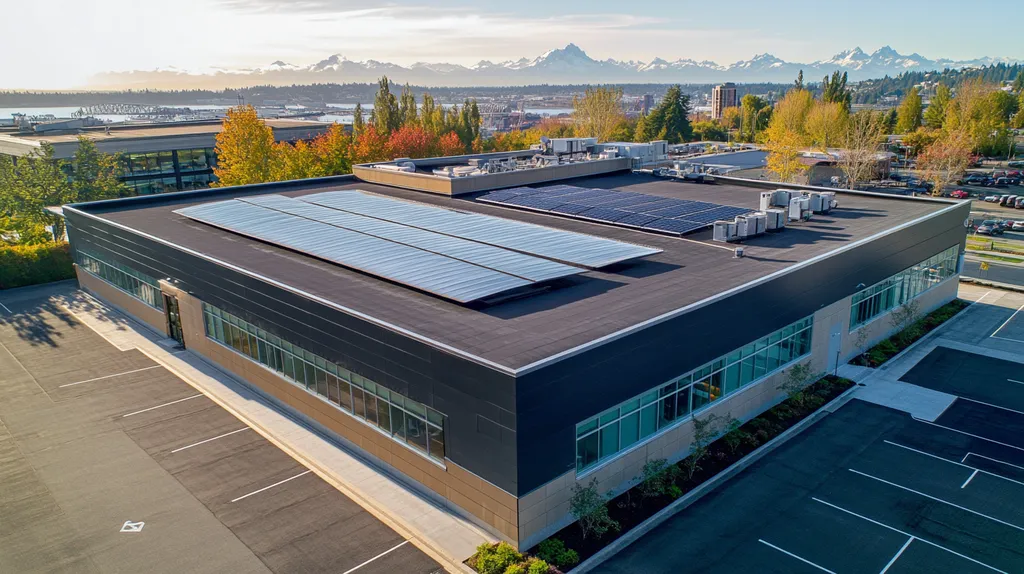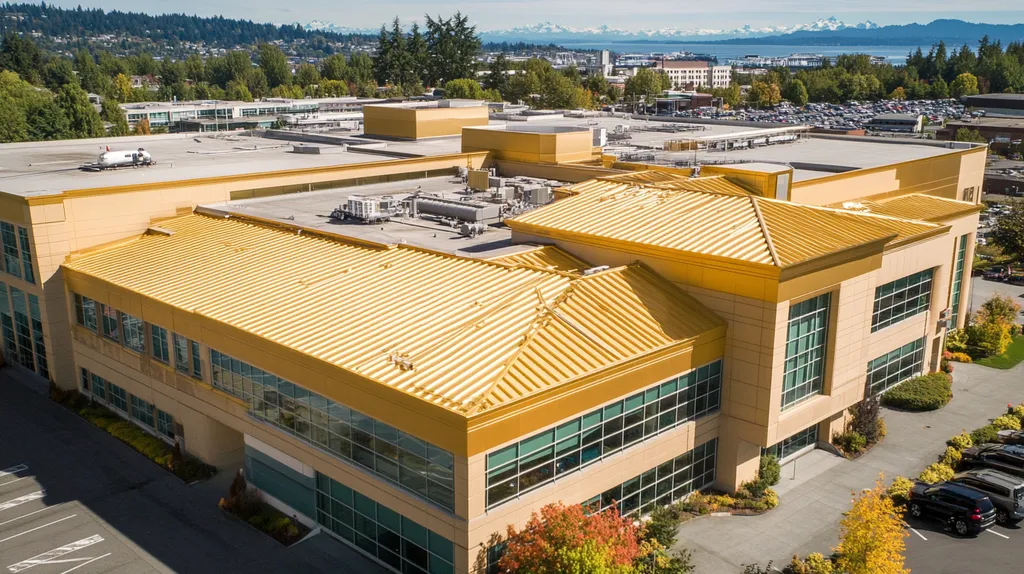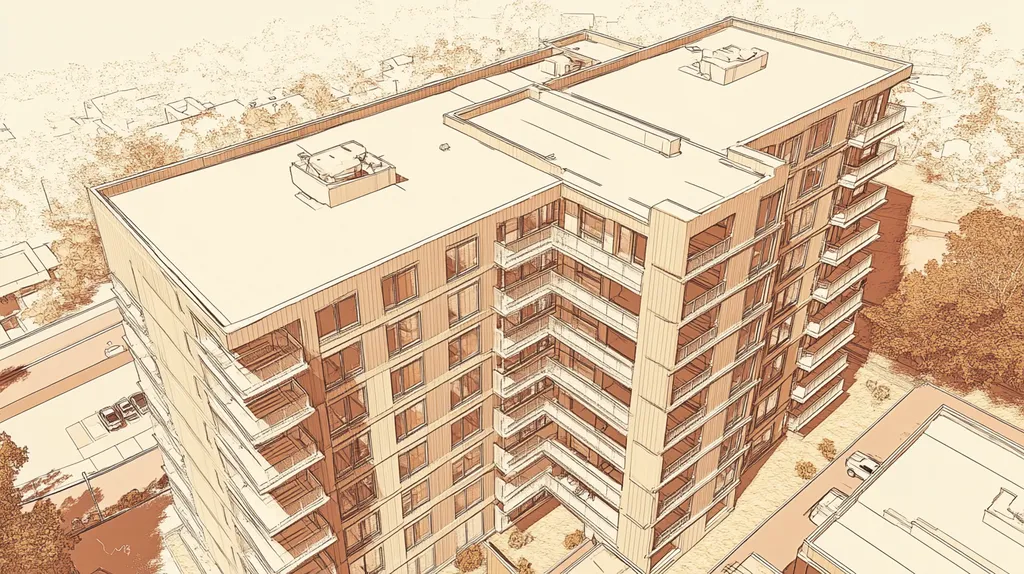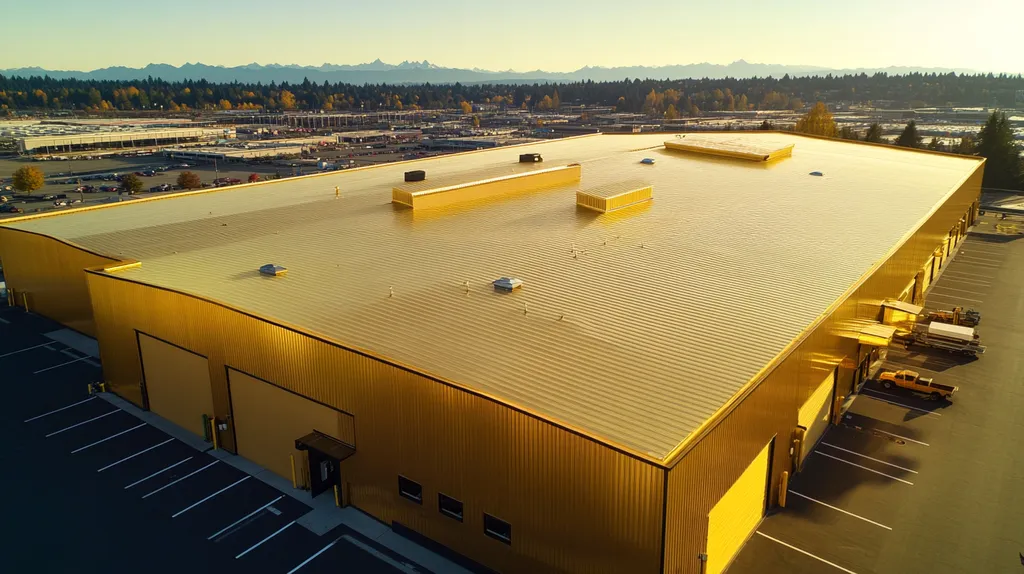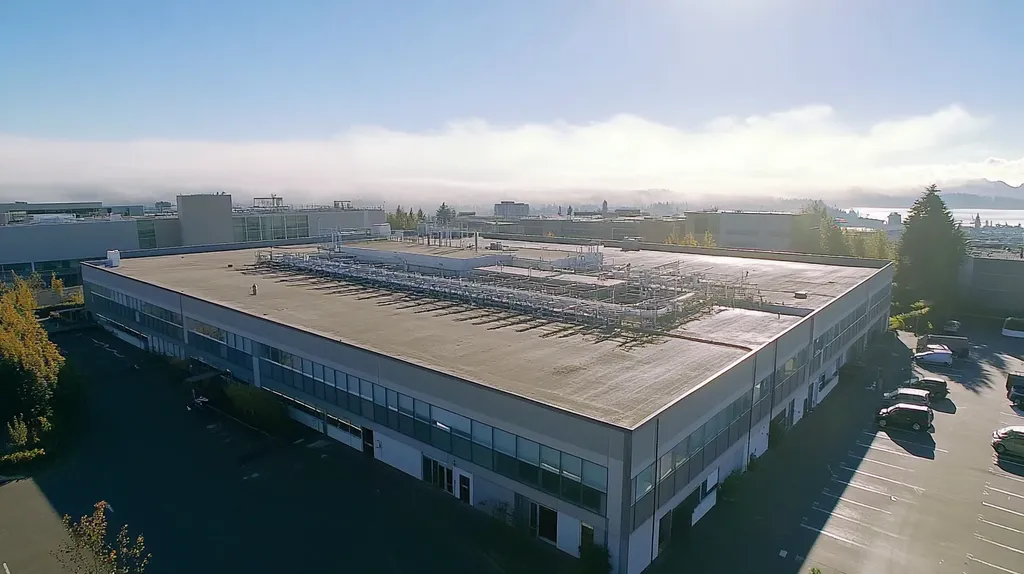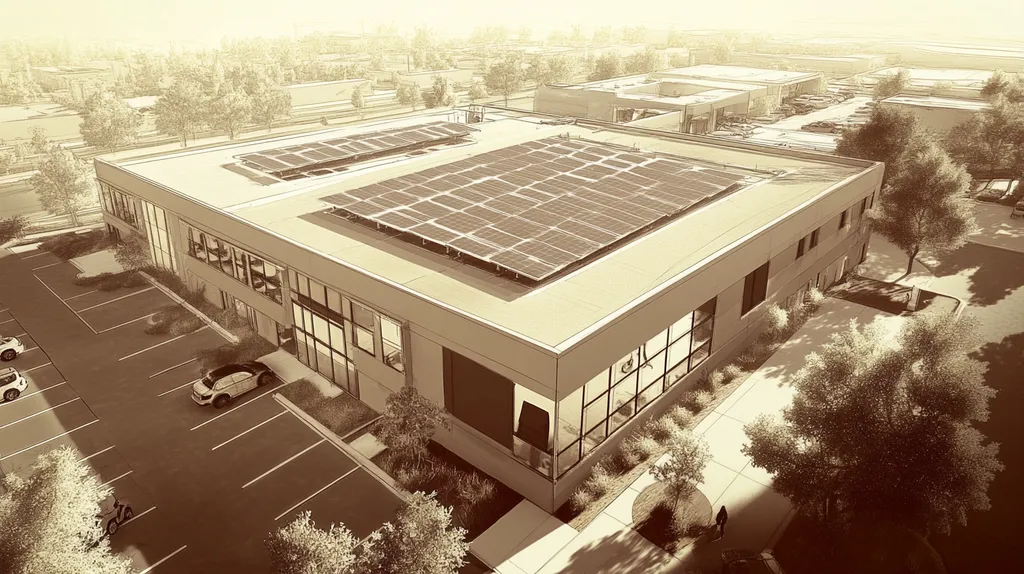Every year, commercial roof emergencies cost U.S. businesses over $2.5 billion in repairs, inventory damage, and operational disruptions. Industry data shows that response times longer than 24 hours can increase total damage costs by up to 45%.
For facility managers, having rapid response protocols in place isn’t optional – it’s essential for protecting assets and maintaining business continuity. The key is developing clear action plans across performance, financial, compliance, and operational considerations.
This comprehensive guide provides facility managers with actionable checklists and protocols to effectively manage roofing emergencies, minimize damage, and protect their organization’s bottom line.
SECTION 1: PERFORMANCE FACTORS
In commercial roofing, timely and effective responses to emergencies are crucial for minimizing damage and controlling costs. Industry estimates suggest that untreated leaks can inflate repair costs, sometimes exceeding 25% of a roof’s total value. It’s vital for facility managers to develop a solid understanding of roof conditions, identify vulnerabilities, and pinpoint urgent repair needs to act confidently during emergencies.
Assessing Roof Condition and Damage Extent
A thorough inspection is the foundation of an accurate assessment of commercial roofing conditions. This process uncovers not only visible damage but also hidden issues that could worsen over time. For instance, a routine evaluation might detect cracks or blisters that, if left unchecked, can jeopardize the roof’s integrity.
Utilizing advanced tools, such as infrared thermography, allows facility managers to uncover hidden leaks and moisture problems. This technology helps assess the roof’s thermal performance and identify critical trouble spots. By gathering this vital information, managers can proactively resolve vulnerabilities before they escalate into significant problems.
In addition to inspections, establishing regular maintenance schedules is essential for tracking roof conditions over time. These documented evaluations create a comprehensive history, enabling informed decisions regarding potential repairs or replacements.
Key Action Items
Identifying Critical Leaks and Water Intrusion Points
Spotting the most critical leak points is essential for effective commercial roofing management. Water intrusion can severely affect structural integrity and may lead to costly repairs. Common entry points for leaks typically include areas around HVAC units, skylights, and roof drains.
During inspections, facility managers should pay close attention to areas prone to wear and tear. Carefully examining seams, flashing, and caulking can help identify small leaks before they worsen. Small water stains on ceilings or walls may also indicate underlying problems that need immediate attention.
Using moisture meters can help detect areas of elevated humidity indoors. Early identification of moisture issues not only protects the roof but also helps prevent the growth of mold and other related health risks.
Key Action Items
Evaluating Roof System Vulnerabilities to Weather
The resilience of a commercial roof often hinges on the local weather patterns it faces. Harsh elements like extreme temperatures, heavy snowfall, and persistent rain can reveal the weak spots of roofing systems. Conducting weather vulnerability assessments is vital for understanding how various environmental conditions may compromise a roof’s integrity.
For example, roofs in areas that experience heavy snowfall should be regularly evaluated for their load-bearing capacity. Likewise, roofs in hurricane-prone regions must be checked for wind resistance, ensuring compliance with industry standards for high-wind conditions.
Staying updated on advancements in roofing materials can enhance weather resistance and reduce vulnerabilities. Investing in more durable materials can significantly extend the life of the roof, helping to ward off potential emergencies.
Key Action Items
SECTION 2: FINANCIAL CONSIDERATIONS
In the face of a commercial roof emergency, the financial repercussions can escalate rapidly. Industry research shows that unresolved roof issues can cost businesses up to $1 million per day. For facility managers, understanding immediate repair costs, navigating the complexities of insurance claims, and evaluating the long-term costs of inaction is vital. This section highlights essential financial considerations that significantly impact a facility’s overall health.
Estimating Immediate Repair Costs and Budget Impact
The first crucial step in managing roof emergencies is calculating immediate repair costs, which can vary widely based on damage severity and materials needed. A simple patch might only set you back a few hundred dollars, while a complete roof replacement could easily exceed $100,000.
To ensure competitive pricing and budget accuracy, facility managers should obtain several estimates. This process not only aids in forecasting but also helps to pinpoint the most cost-effective solutions. It’s important to factor in potential disruptions to business operations that might arise from extended repairs.
Establishing a pre-approved emergency maintenance budget can cushion the financial shock of unexpected repairs. This proactive strategy ensures available funds and helps maintain operational stability. Accurate cost estimations are critical for minimizing financial strain.
Key Action Items
Navigating Insurance Claims and Documentation
Filing an insurance claim during a roofing emergency can be overwhelming. Having the right documentation is essential for efficient claim processing. Facility managers should act quickly to photograph all damage and create a detailed incident report.
Reviewing the insurance policy in advance can clarify coverage limits and exclusions, which will save both time and stress during the claims process. This preparation is invaluable when swift action is required.
Working with an experienced roofing contractor can also streamline the claims process, as they are familiar with documentation requirements and can assist in presenting a strong case for coverage. Quick filing of claims is vital to minimizing out-of-pocket expenses.
Key Action Items
Calculating Long-Term Cost of Delayed Repairs
Delaying roof repairs can result in substantial long-term costs that extend far beyond the initial damage. For example, water infiltration can lead to mold growth, which may incur additional remediation expenses totaling tens of thousands of dollars.
Moreover, the deterioration of roofing materials can significantly shorten the roof’s lifespan, prompting premature replacements. Facility managers must weigh these potential expenses against the costs of immediate repairs.
Additionally, the long-term financial impact can include lost revenue from business disruptions caused by unforeseen roof failures. This underscores the urgency of addressing roofing emergencies promptly and effectively.
In summary, the cost of delaying repairs often surpasses any savings that might arise from postponing action. Timely investments in repairs are crucial for preserving the financial health of the facility.
Key Action Items
SECTION 3: COMPLIANCE REQUIREMENTS
In the midst of a roofing emergency, compliance with regulations is essential to protect the safety of everyone involved and safeguard property. Neglecting compliance can lead to significant financial penalties and legal consequences. With around 4,600 workplace fatalities each year attributed to workplace incidents, many within the roofing sector, it becomes imperative for facility managers to prioritize safety standards, adhere to local building codes, and maintain precise records to mitigate risks and ensure operational continuity.
Meeting OSHA Safety Standards During Emergencies
When facing a roofing emergency, OSHA safety standards must remain paramount. These regulations provide critical guidelines for working at heights, which are vital in roofing scenarios. All workers involved should be well-trained in fall protection techniques, and they must wear appropriate safety gear consistently.
To comply with OSHA, implement safety measures like harnesses, guardrails, and toe boards. Ignoring these requirements can lead to accidents, resulting in serious injuries or fatalities. Additionally, violations may result in fines that could severely strain an organization’s budget.
Regular safety assessments should be conducted, especially following an emergency. This practice allows for the quick identification and mitigation of any potential hazards. Facility managers can support a culture of safety and enhance compliance by having a rapid response safety plan that details evacuation procedures and emergency communications.
Key Action Items
Ensuring Local Building Code Adherence Post-Damage
After managing a roofing emergency, it’s crucial to confirm that repairs align with local building codes. These codes are established to promote safety, durability, and energy efficiency. Non-compliance may lead to structural weaknesses and serious legal issues.
Collaboration with licensed contractors knowledgeable in local code requirements is essential. This teamwork reduces the risk of violations and guarantees that repairs meet safety standards. Non-adherence can inflate insurance premiums and complicate future property transactions.
Following substantial damage, an audit of the existing infrastructure may be necessary. This assessment can pinpoint vulnerable areas needing prompt attention and help inform future upgrades. By being proactive about code compliance, facility managers can prevent costly shutdowns and extend the property’s useful life.
Key Action Items
Maintaining Required Records for Regulatory Audits
Thorough documentation plays a vital role in compliance and preparation for regulatory audits. Facility managers need to maintain comprehensive records for all roofing activities, including repairs, inspections, and incidents. This documentation serves not only as proof of compliance but also as a valuable history for future reference.
Key records should consist of contracts with roofing contractors, photographic evidence of damage, and detailed inspection reports. This information proves invaluable during audits or when future emergencies arise, as it expedites claims processes with insurance providers and minimizes operational downtime.
Staying organized in record-keeping enhances safety and reassures facility managers of their preparedness for unexpected audits. Adopting a digital record-keeping system can further streamline document management, making it effortless to track updates and changes while ensuring ongoing compliance.
Key Action Items
SECTION 4: RISK MANAGEMENT
Commercial roofing emergencies can escalate quickly, creating serious threats to both property and occupant safety. Studies indicate that around 30% of all commercial roof failures stem from delayed responses to maintenance concerns. To navigate these risks effectively, facility managers must establish a comprehensive risk management strategy. This section highlights essential steps for conducting risk assessments, implementing mitigation strategies, and creating emergency response protocols with contractors.
Conducting Risk Assessments for Occupant and Asset Safety
Facility managers must prioritize risk assessments to protect both occupants and valuable assets. Identifying vulnerabilities in roofing systems is critical, as failures can expose machinery or inventory to water damage, resulting in significant financial repercussions.
Regular inspections are essential for catching problems early, especially after severe weather events. Techniques such as drone surveillance or infrared imaging can enhance these assessments, providing a comprehensive view while reducing risks to inspectors.
After identifying vulnerabilities, it’s important to document findings and prioritize repairs. Using a risk matrix can categorize issues by severity and impact, enabling informed decisions and optimal allocation of resources.
Key Action Items
Implementing Mitigation Strategies for Secondary Damage
Mitigation strategies play a vital role in minimizing damage during roofing emergencies. One effective measure is to install advanced drainage systems that prevent water pooling, a leading cause of roof failure. Proper drainage significantly reduces the risk of secondary damage both to the roof and the building’s interior.
Maintaining clear access to roof areas is equally critical. Regularly removing debris and ensuring rooftop equipment is secured can prevent problems during severe weather. This proactive maintenance can lower repair costs and minimize the need for emergency interventions.
Temporary protective measures, such as tarps or securing leaks, can provide immediate relief during crises. Quick-response solutions minimize damage and allow time for more permanent fixes.
Key Action Items
Establishing Emergency Response Protocols with Contractors
Implementing effective emergency response protocols is essential for managing roofing crises. Facility managers should create a clear plan outlining procedures for notifying contractors and coordinating actions. This plan should include contact information for trusted contractors to ensure rapid access in emergencies.
Regular training with contractors is also crucial. These sessions should focus on communication norms and delineating roles during emergencies, fostering efficiency and collaboration in high-pressure situations.
Incorporating technology can enhance coordination, utilizing apps for real-time updates and communication. This approach keeps all parties informed and ready to act swiftly during roofing emergencies.
Key Action Items
SECTION 5: OPERATIONAL PROCEDURES
In a roofing emergency, prompt action is crucial. Delays can lead to extensive water damage, structural issues, or significant operational disruptions. Research indicates that even a single day of roof damage can result in thousands of dollars in repairs and lost income. Facility managers must implement operational procedures quickly to minimize risks and safeguard assets.
Activating Designated Emergency Communication Channels
Effective communication is vital during a roofing emergency. Facility managers should establish clear emergency communication protocols to notify all stakeholders immediately, including employees, property owners, and emergency response teams.
Using a dedicated emergency phone tree or messaging system ensures everyone is informed promptly and efficiently. For instance, if a leak is spotted, alerting the maintenance team right away enables quicker responses and resource allocation.
Conducting regular drills simulating emergency scenarios allows staff to practice these communication protocols. Familiarity with contacts and procedures significantly reduces confusion and enhances response times during an actual crisis.
Key Action Items
Coordinating Temporary Containment and Protection Measures
During a roofing emergency, implementing temporary containment and protection measures is essential. These actions help prevent further damage and secure the area, protecting both employees and assets. For instance, using buckets or tarps to direct water away from sensitive areas during a leak is crucial.
Covering damaged areas with protective materials, like tarps or waterproof sheeting, shields vulnerable equipment while waiting for professional repairs. Keeping employees aware of safety protocols is equally important, including designating safe areas to limit exposure to hazards.
Documenting the extent of damage and the containment measures taken is critical for insurance claims. This information supports claims and informs repair decisions once professional assistance arrives.
Key Action Items
Executing Rapid Vendor Mobilization and On-Site Assessment
Swift mobilization of roofing vendors follows the identification of a roofing issue. Facility managers should maintain a list of reliable roofing contractors who can respond quickly. A pre-established relationship with these vendors allows for faster action during emergencies.
When contractors arrive on-site, they should conduct a thorough assessment to identify the root cause and devise targeted solutions. For example, if a roof membrane is compromised, immediate repairs or replacements can commence without delay.
Choosing vendors familiar with the specific roofing system in place ensures quick and accurate assessments. This expertise reduces the risk of overlooking critical issues during these critical moments.
Key Action Items
SECTION 5: OPERATIONAL PROCEDURES
In a roofing emergency, every second counts. Delaying response can lead to serious water damage, structural instability, or interruptions to business activities. According to the National Roofing Contractors Association, even one day of roof damage can result in thousands of dollars in repairs and lost income. Therefore, facility managers must swiftly implement operational procedures to mitigate risks and protect their assets.
Activating Designated Emergency Communication Channels
Clear communication is essential during roofing emergencies. Facility managers should establish effective emergency communication protocols to ensure immediate notification of all stakeholders, including employees, property owners, and emergency response teams.
Utilizing an emergency phone tree or messaging system can facilitate prompt communication. If a leak is identified, notifying the maintenance team quickly allows for faster assessment and resource deployment.
Regular emergency drills help staff practice these protocols, increasing familiarity with contacts and procedures. This preparation significantly reduces confusion and enhances response time in real crises.
Additionally, implementing mobile apps designed for facility management can streamline communication with real-time updates and alerts, making dealing with roofing emergencies more efficient.
Key Action Items
Coordinating Temporary Containment and Protection Measures
During a roofing emergency, implementing temporary containment and protection measures is crucial to minimizing further damage and securing the area. For instance, using buckets or tarps to redirect water during a leak is essential.
Covering exposed areas with protective materials like tarps or waterproof sheeting safeguards vulnerable equipment while waiting for repairs. It’s equally important to inform employees about safety protocols and designate safe zones to limit exposure to hazards.
Documenting damage and containment efforts is vital for insurance claims. This information supports claims processing and informs repair decisions once professionals arrive on-site.
Key Action Items
Executing Rapid Vendor Mobilization and On-Site Assessment
Swiftly mobilizing roofing vendors is critical upon identifying a roofing issue. Facility managers should keep a list of trusted contractors ready to respond quickly during emergencies. Establishing relationships with these vendors facilitates prompt action when needed.
When contractors arrive, they should conduct a thorough assessment to identify the root cause and formulate solutions. If a roof membrane is compromised, immediate repairs can begin without delay.
Choosing vendors who are familiar with the specific roofing system ensures accurate and quick assessments, minimizing the risk of overlooking critical issues. It’s also essential to coordinate repair actions with ongoing facility activities, ensuring minimal disruption to daily operations.
Key Action Items
The Bottom Line
With commercial roof failures costing businesses over $2.5 billion annually, the importance of rapid emergency response cannot be overstated. Industry data shows that response delays beyond 24 hours can increase total damage costs by up to 45%.
The key to effective emergency management lies in preparation and proactive planning across all critical areas – from performance monitoring to financial preparedness, regulatory compliance, and operational protocols.
By implementing comprehensive inspection schedules, maintaining detailed documentation, and establishing clear communication channels with trusted contractors, facility managers can significantly reduce both the frequency and impact of roofing emergencies.
Success in managing commercial roof emergencies ultimately depends on having systematic, documented procedures in place before issues arise.
FREQUENTLY ASKED QUESTIONS
Q. How can I assess my commercial roof’s condition?
A. Begin with a thorough inspection to identify visible and hidden damages. Utilize tools like infrared thermography to detect moisture problems. Regular evaluations create a maintenance history that supports informed decision-making.
Q. What are the immediate repair costs for an industrial roof emergency?
A. Immediate repair costs vary from minor patches costing hundreds to full replacements over $100,000. Gather multiple estimates to find cost-effective solutions. Consider potential operational disruptions while budgeting for repairs.
Q. How can I ensure compliance during roof repairs?
A. Collaborate with licensed contractors familiar with local building codes. Conduct audits after damage to ensure repairs adhere to specified regulations. Regular reviews help maintain ongoing compliance, avoiding costly violations.
Q. What should I include in a risk assessment for my commercial roof?
A. Focus on identifying vulnerabilities that could lead to failures. Regular inspections, enhanced by drone surveys, provide a comprehensive view. Document vulnerabilities and use a risk matrix to prioritize repairs effectively.
Q. How should I coordinate communication during a roofing emergency?
A. Establish emergency communication protocols to alert all stakeholders quickly. Use an emergency phone tree to facilitate prompt notifications. Regular drills enhance readiness, ensuring quick responses during real emergencies.
Q. How can I mobilize roofing contractors quickly in an emergency?
A. Maintain a list of trusted contractors who can respond swiftly. Create relationships with vendors for efficient mobilization. Ensure contractors conduct thorough on-site assessments to identify issues and implement repairs promptly.
Q. What are some temporary protection measures I can use?
A. Use buckets or tarps to redirect water during leaks and cover damaged spots with protective materials. Inform employees about safety measures and designate safe areas. Document all damage and containment efforts for future reference.

